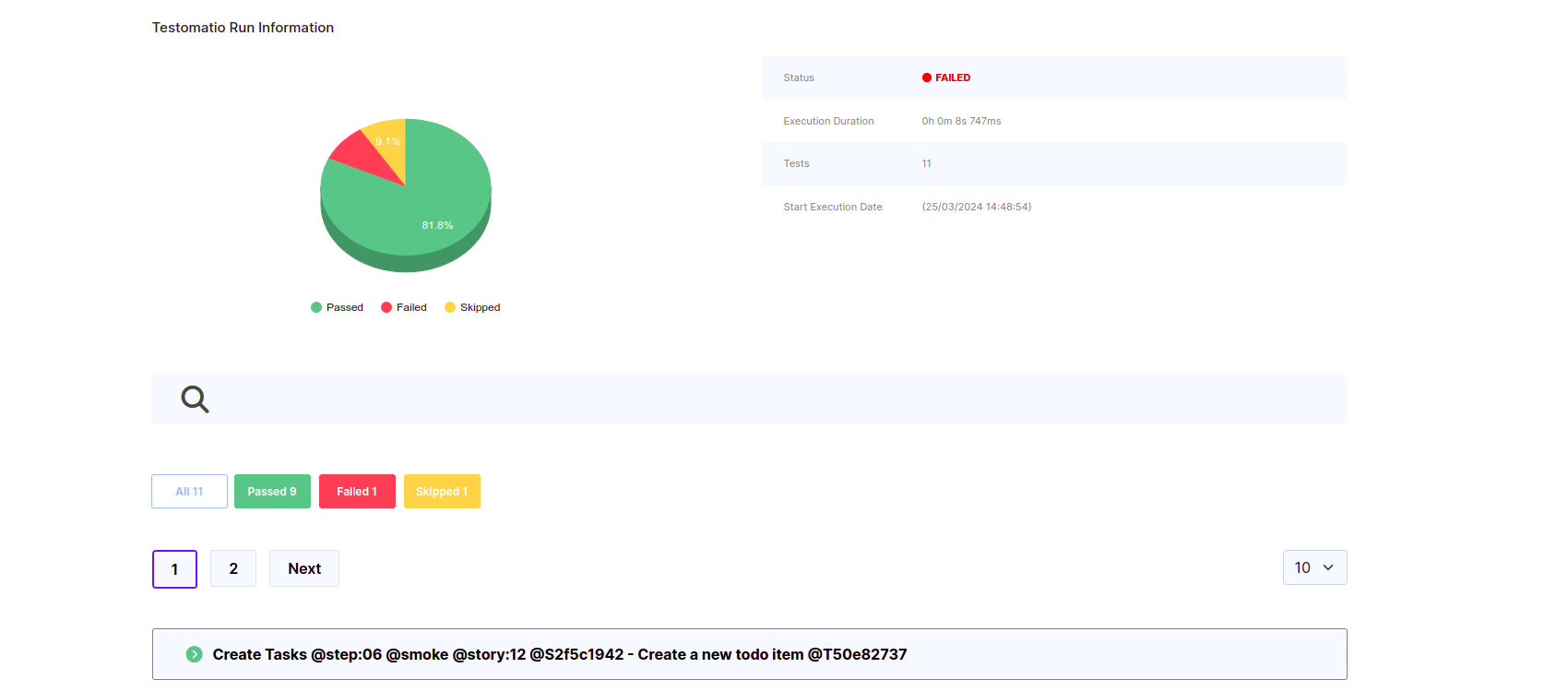Html
Testomat.io HTML Pipe
The Testomat.io HTML Pipe is a feature that allows you to generate and save HTML reports based on your test results. This functionality is part of the Testomat.io testing ecosystem.
Prerequisites
🔌 TESTOMATIO users now have the option to generate an HTML report based on their test execution results. If a user hasn’t SET TESTOMATIO environment, the report will still be generated
TESTOMATIO_HTML_REPORT_SAVE=1 <actual run command>Enabling HTML Reports
To enable HTML reports, set the TESTOMATIO_HTML_REPORT_SAVE environment variable to 1. Additionally, you can customize the HTML report folder and filename using the following variables:
- TESTOMATIO_HTML_REPORT_SAVE=1
- TESTOMATIO_HTML_REPORT_FOLDER: Specify the folder for HTML reports
- TESTOMATIO_HTML_FILENAME: Set the desired filename for the HTML report
!!!Please note that the name must include the extension “.html”. If the extension is missing, the report will be saved with the default name = testomatio-report.html
Usage
The HTML Pipe operates as part of the test execution process. When running your tests with the specified environment variables, the HTML Pipe will generate reports based on the test results.
Report Generation
Once the test run is complete, the HTML Pipe compiles the test results and generates an HTML report. The generated report is saved to the specified HTML output path.
The HTML report includes essential information, such as run ID, status, parallel execution indication, run URL, execution time, execution date, and details of individual tests.
Example Command
📊 Generate a report without triggering the TESTOMATIO pipe (no data sent to the client)
Execute the following command to generate a report without sending data to TESTOMATIO:
TESTOMATIO_HTML_REPORT_SAVE=1 npx codeceptjs run📝 Generate a report based on the default folder/html-file name: This command triggers the test execution process and enables the HTML Pipe to generate reports based on the test results:
- Output folder: html-report/
- Output file: testomatio-report.html
Execute the following command to generate a report with default settings:
TESTOMATIO_HTML_REPORT_SAVE=1 TESTOMATIO={API_KEY} npx codeceptjs run📂 Generate a report based on a custom HTML folder/html-file name. !!!You can SET only one of the following parameters if needed: folder or file name
Execute the following command to generate a report with both folder & file names:
TESTOMATIO_HTML_REPORT_SAVE=1 TESTOMATIO_HTML_REPORT_FOLDER=user-html-reporter TESTOMATIO_HTML_FILENAME=custom.html TESTOMATIO={API_KEY} npx codeceptjs run🖥️ An example of a report can be seen in the screenshot below:
